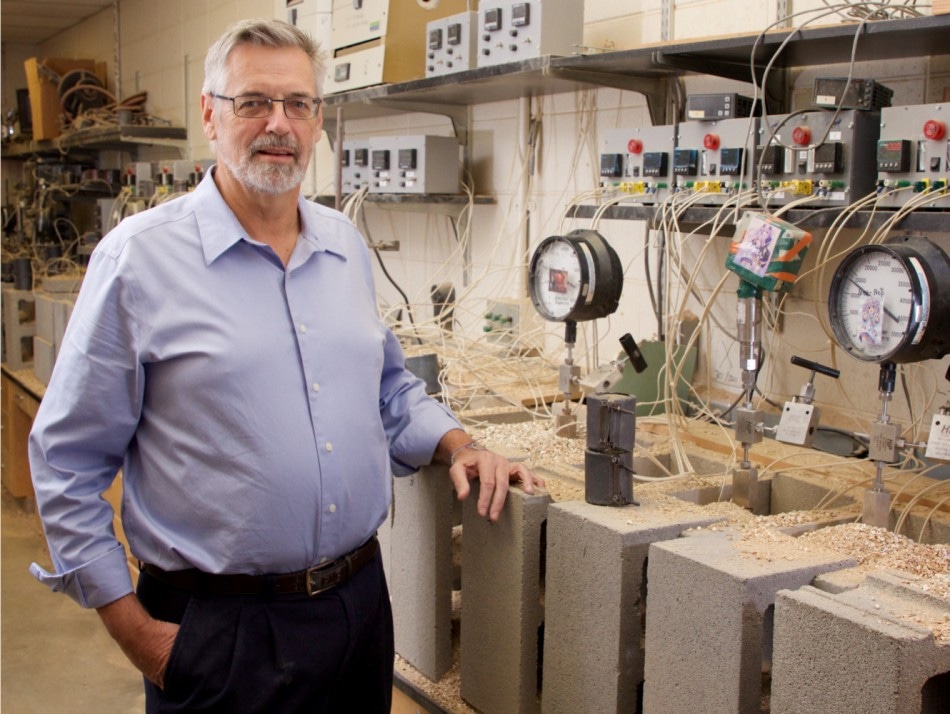Dec 18 2019
In the near future, quantum computing, an emerging technology, may be able to solve highly complex problems that cannot be solved by even the most powerful existing supercomputers.
 Quantum Materials Could Help Quantum Computing Reach Full Potential" />
Joseph W. Kolis, Tobey-Beaudrot Professor, Inorganic Chemistry, has received new funding from the Department of Energy to rationally design new quantum materials for use in quantum computing. Image Credit: College of Science, Clemson University.
Quantum Materials Could Help Quantum Computing Reach Full Potential" />
Joseph W. Kolis, Tobey-Beaudrot Professor, Inorganic Chemistry, has received new funding from the Department of Energy to rationally design new quantum materials for use in quantum computing. Image Credit: College of Science, Clemson University.
If this happens, quantum computing will completely transform a wide array of fields, such as encryption and cybersecurity, weather forecasting, and drug discovery.
In contrast to traditional computers that store information in binary form (as 1s or 0s), quantum computers leverage the unique properties of quantum physics to store information in various forms called qubits. As a result, it would be possible to perform operations considerably faster. Moreover, computational power also increases exponentially.
However, for quantum computing to achieve its full potential, scientists must create new quantum materials to develop qubits that are more reliable. Qubits are the fundamental elements of a quantum circuit—similar to integrated circuits and semiconductor transistors in the existing computers.
Professor Joe Kolis from Clemson University’s College of Science recently obtained a $550,000 Department of Energy grant to logically design new quantum materials using rare earth oxides. Kolis, who is a specialist in hydrothermal synthesis, will use a blend of water, extreme heat, and high pressure to develop new compounds that have magnetic and other properties and are well-suited for quantum computing and data storage.
“The checklist of things you’ve got to hit to get a good candidate material for quantum computing is pretty long,” stated Kolis, the Tobey-Beaudrot Professor of Chemistry in the department of chemistry.
The behavior of the material at temperatures that are extremely cold is one main consideration. For proper functioning, quantum computers work at around −450 °F, which inhibits qubits from switching between quantum states and introducing computational errors.
For new materials, this is a huge challenge.
By the time you cool material down to about 50 Kelvin or minus-370 Fahrenheit, the magnetic vectors have order in them. But we want a material to supercool and have the magnetic vectors float around in the crystal and never quite fully order, which is what’s needed for the quantum phenomenon to take over.
Joe Kolis, Tobey-Beaudrot Professor of Chemistry, Department of Chemistry, College of Science, Clemson University
To address this problem, Kolis suggests developing high-quality single crystals using germanate pyrochlores at lower pressure and temperature than usually needed in the case of the rare earth elements. In general, these compounds are heated to their melting point of approximately 4000 °F to control their properties.
But when rare earths are heated to such extreme temperatures, it results in all kinds of problems and leads to defective material, added Kolis. However, while using his high-pressure method, Kolis has to heat the material to just about 1000 °F.
The fact that we can reduce the growth temperature by a factor of three or four means we don’t get disorder or a breakdown in the lattice, so we’re able to get high-quality material this way. We’re essentially building the material very gently, brick by brick, so it’s organized. Then when we start to cool it down, whatever magnetic vectors are there, they just collapse. But the atoms will order, which is how you create a quantum material.
Joe Kolis, Tobey-Beaudrot Professor of Chemistry, Department of Chemistry, College of Science, Clemson University
Kolis expects that the three-year project will offer better insights into what takes place within rare earth crystals when attempts are made to control the magnetic vectors.
“What we’ll contribute is a better understanding of what it takes to achieve quantum disorder in these compounds,” added Kolis.
Kolis is collaborating with Colorado State University physics assistant professor Kate Ross on the project. Ross is a specialist in neutron-scattering measurement methods, which she will employ to describe the crystals developed by Kolis, and to analyze their response to a wide range of temperatures. Ross also offers guidance on the forms of magnetic and electronic functionality needed for quantum computing.
Kolis said he is one of the only very few researchers across the globe who develop crystals by making use of the hydrothermal synthesis method. Therefore, he and his students have had to develop all of the high-pressure growth equipment on their own. The synthesis of quality material under such severe conditions would not be feasible without the expertise of Clemson University’s Machining and Technical Services (MTS) group.
Those guys are really good, and they have contributed a lot to my research. Not only do they do the machining, but they can give me design suggestions on the equipment. They’re a critical part of this project.
Joe Kolis, Tobey-Beaudrot Professor of Chemistry, Department of Chemistry, College of Science, Clemson University
This study is based on research work funded by the U.S. Department of Energy through grant DE-SC0020071.